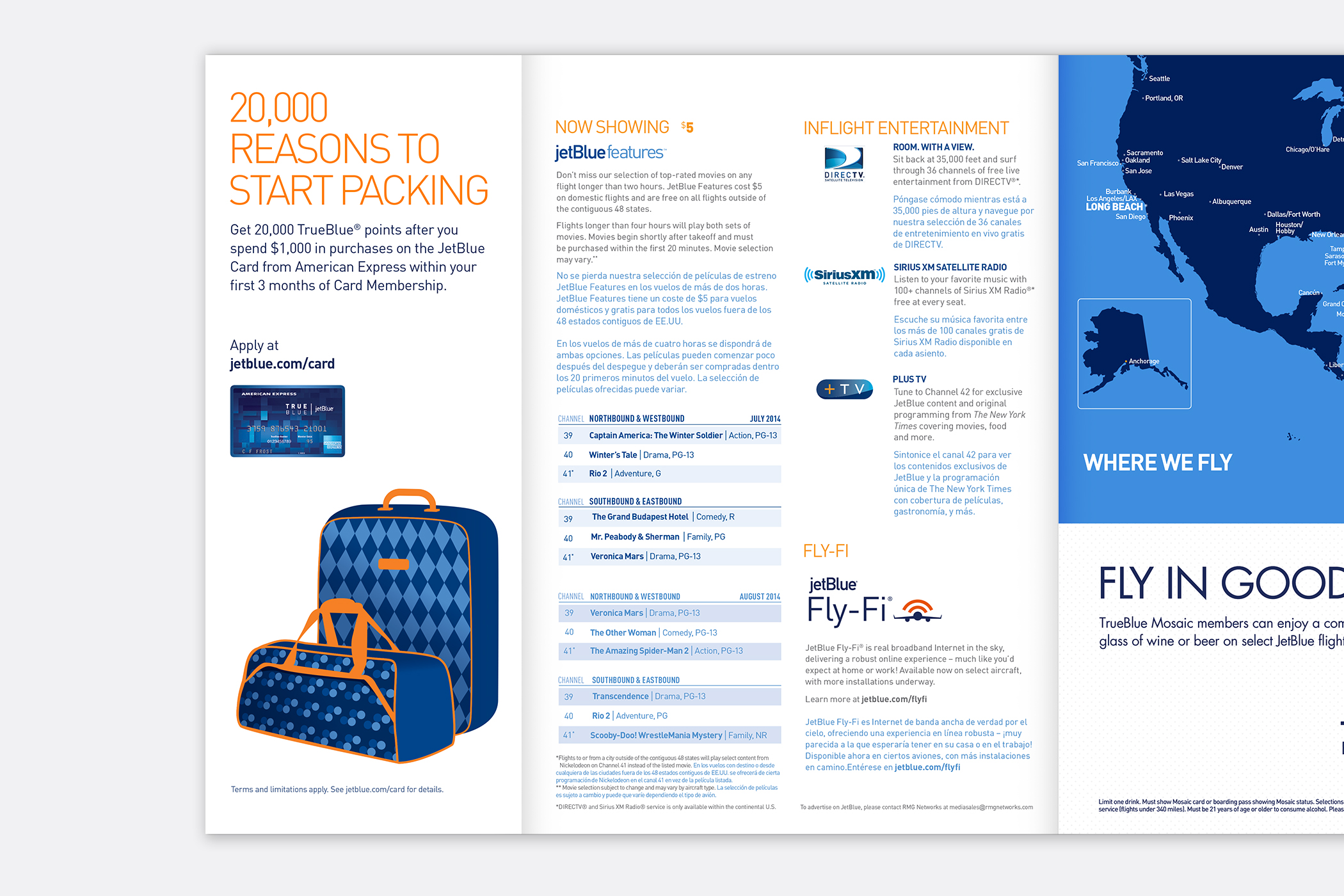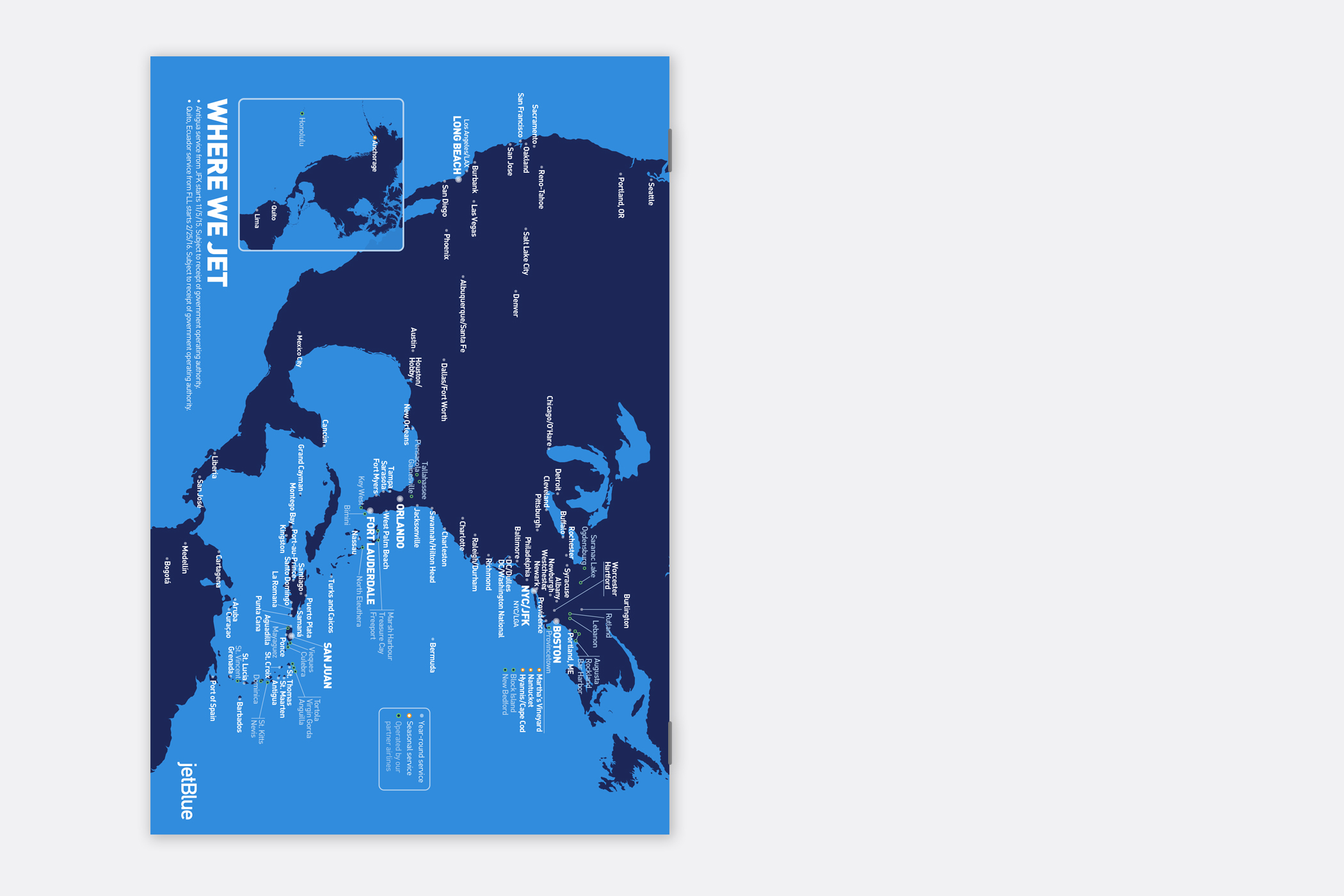CORE SEATBACK CARD EVOLUTION

Timeline of seatback cards from 2013 to 2020
Whether looking to see what snacks and drinks are on offer, what new movies are playing, or how to log onto the free inflight wifi, the seatback card has all the information needed to make yourself at home. The seatback card is printed every two months in English and Spanish with enough copies for each seat in the fleet.
When I started at JetBlue in 2013, the card was a simple tri-fold. As the onboard offerings grew and routes become more complex, the card grew, and the layout evolved. First to an 8-page step book so inflight crewmembers could thumb through the sections one-handed to help customers with the right information. Then, as EatUp Cafe, our fresh food program, expanded the food options and became available on more routes, we created a stand-alone bistro-style tri-fold. In 2020, the pandemic called for radical shifts; we removed the printed cards from our seatback pockets to reduce shared physical touchpoints and leveraged our wifi portal and interactive seatback displays for monthly updates.
When I started at JetBlue in 2013, the card was a simple tri-fold. As the onboard offerings grew and routes become more complex, the card grew, and the layout evolved. First to an 8-page step book so inflight crewmembers could thumb through the sections one-handed to help customers with the right information. Then, as EatUp Cafe, our fresh food program, expanded the food options and became available on more routes, we created a stand-alone bistro-style tri-fold. In 2020, the pandemic called for radical shifts; we removed the printed cards from our seatback pockets to reduce shared physical touchpoints and leveraged our wifi portal and interactive seatback displays for monthly updates.














 Move to digital interfaces in 2020
Move to digital interfaces in 2020Art Direction/Design: Lashonne Duncan and Ciara Cordasco Design: Ciara Cordasco and Isabel Chen
That’s all.